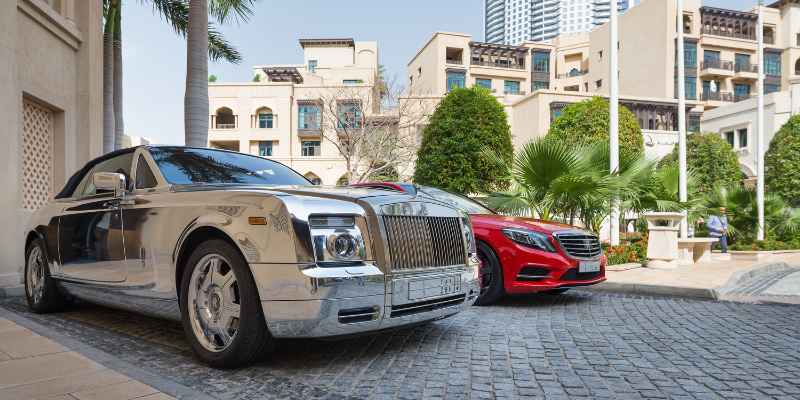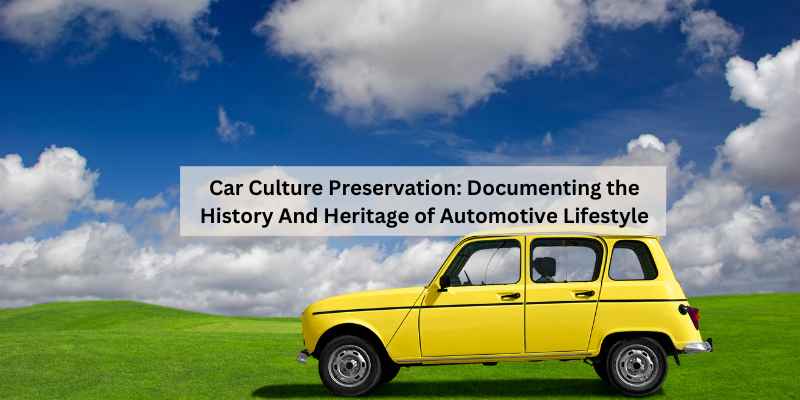Car Culture Preservation: Documenting the History And Heritage of Automotive Lifestyle
Car culture preservation involves documenting the history and heritage of automotive lifestyle, capturing its significance and impact. From drive-in theaters to car clubs, automobiles have influenced social lives and popular culture, reflecting wealth and status.
As car culture flourished, it became intertwined with the freedom and social experiences of teenagers. Preserving this heritage and lifestyle is crucial for future generations to understand and appreciate the cultural and historical significance of automobiles. Through careful preservation and documentation, the unique beliefs, customs, and achievements of car enthusiasts can be celebrated and passed down, ensuring the enduring legacy of automotive culture.
The Birth Of Car Culture
Car culture emerged in the early 20th century, revolutionizing society with the introduction of automobiles. The automobile’s social impact was profound, shaping lifestyle choices and societal norms.
The Automobile’s Social Impact
Automobiles became symbols of wealth and status, influencing popular culture and everyday life. They offered freedom and mobility, transforming how people interacted and traveled.
Drive-ins And Drive-thrus: A Car-centric Lifestyle
Drive-ins and drive-thrus became iconic symbols of car culture, catering to car enthusiasts seeking convenience and community. Car clubs and gatherings further solidified the bond between cars and social life.
Evolution Of Automotive Lifestyle
Over the years, the automotive lifestyle has evolved significantly, transitioning from a mere mode of transportation to a symbol of status, style, and self-expression.
From Utility To Status Symbol
Cars have transformed from utilitarian vehicles to coveted symbols of wealth and prestige, reflecting societal values and aspirations.
The Emergence Of Car Clubs And Communities
Car clubs and communities have played a pivotal role in fostering a sense of camaraderie among enthusiasts, providing a platform for sharing knowledge, experiences, and a passion for automobiles.
The Significance Of Vehicle Preservation
Restoration Vs. Preservation
Restoration involves removing, replacing, or repairing vehicle parts, while preservation entails maintaining the original components. It’s a delicate balance between retaining the vehicle’s authenticity and ensuring its longevity.
The Economics Of Preserving Classics
Preserving classic vehicles contributes to their appreciation in value over time. As these vehicles become rarer, their cultural and historical significance increases, making them coveted collectibles. This trend drives the demand and economic value of preserved classics.
Classic Car Collecting
Classic car collecting is a passion that transcends time, preserving the history and heritage of iconic automotive masterpieces. From vintage beauties to timeless classics, enthusiasts and collectors are dedicated to safeguarding the legacy of these remarkable vehicles.
The Rise Of The Hobby
The hobby of classic car collecting has witnessed a remarkable surge in popularity in recent years. With an increasing number of individuals recognizing the cultural and historical significance of classic automobiles, the demand for these timeless treasures has soared.
Authenticity In The Collector’s World
Preserving authenticity is paramount in the world of classic car collecting. Enthusiasts and collectors prioritize working with reputable restoration experts to ensure that the original essence of these vintage vehicles is safeguarded. Sourcing original parts and adhering to meticulous restoration processes are integral to maintaining the authenticity of these automotive marvels.
Role Of Museums In Car Preservation
Car museums play a pivotal role in preserving the rich history and heritage of the automotive lifestyle. They serve as custodians of automotive history, documenting and archiving the legacy of automobiles to ensure that it is passed down to future generations. Through their collections and exhibits, these museums contribute significantly to the conservation and appreciation of the automobile’s cultural significance.
Custodians Of Automotive History
Car museums act as custodians of automotive history, safeguarding and showcasing the evolution of automobiles over time. They meticulously preserve and display classic cars, vintage models, and significant automotive artifacts, allowing visitors to immerse themselves in the captivating journey of automotive innovation and design.
Archiving The Automobile’s Legacy
In addition to showcasing iconic vehicles, car museums also focus on archiving historical records, photographs, and other artifacts related to the automotive industry. By meticulously documenting the evolution of car culture, these museums ensure that the legacy of automobiles is preserved for future enthusiasts, researchers, and historians to explore and appreciate.
Preserving Automotive Provenance
Preserving automotive provenance is essential for documenting the rich history and heritage of the automotive lifestyle. It encompasses the comprehensive documentation of the history and ownership of vehicles, ensuring the preservation of their authenticity and cultural significance.
Documenting History And Ownership
Documenting the history and ownership of vehicles is a vital aspect of preserving automotive provenance. It involves maintaining detailed records of the vehicle’s origin, previous owners, significant events, and any modifications or restorations that have taken place over the years.
The Importance Of Comprehensive Records
Comprehensive records play a crucial role in preserving automotive provenance by providing a detailed account of the vehicle’s journey through time. These records ensure transparency and authenticity, contributing to the overall documentation of automotive history and heritage.
Automotive Heritage And Cultural Significance

Preserving the history and heritage of automotive lifestyle is crucial for documenting the cultural significance of car culture. By documenting the evolution of car clubs, drive-in theaters, and the role of automobiles in social lives, we ensure the preservation of an integral part of our cultural heritage.
Cars As Cultural Landmarks
Automobiles symbolize wealth and status, shaping both daily life and popular culture.
Integration Into Society And Popular Culture
Car culture thrived, influencing drive-in theaters, drive-thru restaurants, and social dynamics.
The Future Of Car Culture Preservation
Preserving the heritage of car culture is essential to maintaining the legacy of automotive lifestyle for future generations. As we look ahead, it is crucial to address the challenges in the digital age and explore innovative approaches to documentation.
Challenges In The Digital Age
- Digitization of information poses risks to physical preservation.
- Online platforms may lack authenticity and context of car culture history.
- Accessibility issues for future researchers due to evolving digital formats.
Innovative Approaches To Documentation
- Utilizing virtual reality for immersive experiences of classic car showcases.
- Creating interactive online archives with multimedia content for engagement.
- Implementing blockchain technology for secure storage of historical data.
Engaging The Next Generation
As we delve into the world of car culture preservation, it becomes imperative to focus on engaging the next generation. By involving young enthusiasts, we can ensure the continuity and evolution of automotive heritage.
Educational Initiatives
Implementing educational programs that highlight the history and significance of car culture can spark interest and appreciation among the youth. Workshops, seminars, and interactive sessions can provide valuable insights and foster a sense of belonging to this rich automotive legacy.
Involvement Through Technology And Social Media
Utilizing technology and social media platforms is essential to connect with the younger generation. Engaging content, virtual tours of car museums, interactive online forums, and live streaming of automotive events can captivate their interest and keep them informed about the latest trends in the car culture scene.
Global Perspectives On Car Culture
Explore the global perspectives on car culture, focusing on the preservation of automotive lifestyle history and heritage. From drive-in theaters to car clubs, the fascination with automobiles has left a significant mark on popular culture. Documenting and archiving this rich history is crucial for preserving the authenticity of classic car culture.
Diverse Attitudes Towards Automotive Heritage
Car culture is a global phenomenon that has shaped societies and lifestyles for over a century. However, the attitudes towards automotive heritage vary from country to country. In some regions, classic cars are revered as cultural icons, while in others they are viewed as mere machines that are disposable once they have served their purpose. The diversity of attitudes towards automotive heritage is a reflection of the different cultural values and historical contexts that shape them.
International Efforts In Preservation
Despite the varied attitudes towards automotive heritage, there are international efforts to preserve this important aspect of our cultural heritage. Governments, private organizations, and individuals are all involved in documenting and archiving historical records, photographs, and other artifacts related to cars. Some countries have even recognized classic cars as official landmarks, providing legal protection and financial incentives for their preservation.
Moreover, there are several car museums around the world that act as custodians of automotive history. These museums not only showcase classic cars but also provide a platform for education and research in the field of automotive heritage. Through these efforts, we can ensure that the history and heritage of car culture are preserved for future generations.
In conclusion, car culture is a significant part of our global heritage, and it is important to document and preserve it for future generations. The diverse attitudes towards automotive heritage and the international efforts in preservation reflect the importance of this cultural phenomenon. Through these efforts, we can ensure that the legacy of car culture continues to inspire and shape societies around the world.

Frequently Asked Questions
What Was The Cultural Significance Of The Automobile?
The automobile had significant cultural importance as a symbol of wealth and status, both in everyday life and popular culture. Its introduction also gave rise to car culture, with drive-in theaters, drive-thru restaurants, and car clubs becoming popular. Teenagers embraced the newfound freedom offered by cars, making them an integral part of their social lives.
What Is Vehicle Preservation?
Vehicle preservation involves maintaining original components to retain value and historical significance, unlike restoration which involves replacement or repair.
What Is Automotive Culture?
Automotive culture encompasses shared beliefs, values, customs, and achievements of people passionate about cars. It includes language, arts, and institutions related to the automobile.
How Would You Describe The Car Culture Of The 1950s?
The car culture of the 1950s was vibrant, with drive-in theaters, drive-thru restaurants, and car clubs thriving. Teenagers embraced cars for social freedom, making them central to their lives.
Conclusion
Documenting the history and heritage of automotive lifestyle is crucial in preserving the cultural significance of automobiles. Through careful preservation, car enthusiasts can retain the original components of their vehicles and maintain their authenticity. The rise of car collecting and classic car culture has made it even more important to protect and recognize our overlooked automotive heritage.
Car museums serve as custodians of automotive history, documenting and archiving artifacts related to the industry. By valuing and preserving the cultural heritage of car culture, we can ensure that future generations will appreciate and understand its significance.








